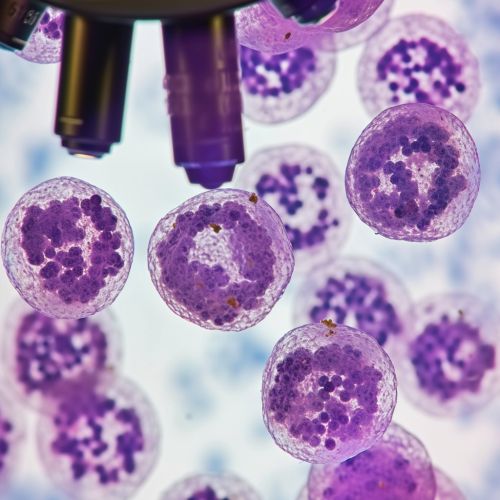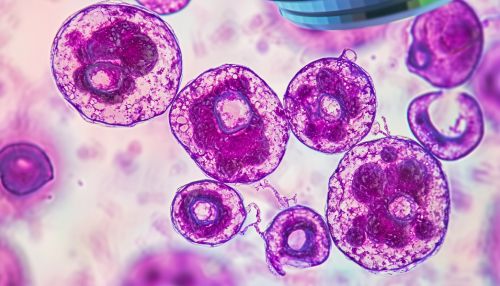Leukocyte
Overview
A leukocyte, also known as a white blood cell (WBC), is a type of cell found in the blood, lymphatic system, and various tissues of the body. Leukocytes are part of the immune system and play a crucial role in defending the body against both infectious disease and foreign materials. They are produced and derived from a multipotent cell in the bone marrow known as a hematopoietic stem cell.


Types of Leukocytes
Leukocytes can be broadly classified into two main categories: granulocytes and agranulocytes.
Granulocytes
Granulocytes are characterized by the presence of granules in their cytoplasm. These granules contain various enzymes and proteins that aid in the cell's immune response. There are three types of granulocytes: neutrophils, eosinophils, and basophils.
- Neutrophils are the most abundant type of leukocyte and are the first to arrive at the site of an infection. They are phagocytic cells, meaning they can engulf and destroy pathogens.
- Eosinophils are involved in the immune response against parasites and also play a role in allergic reactions.
- Basophils are the least common type of leukocyte. They release histamine during an allergic reaction, contributing to inflammation.
Agranulocytes
Agranulocytes lack granules in their cytoplasm. There are two types of agranulocytes: lymphocytes and monocytes.
- Lymphocytes are responsible for the adaptive immune response, which provides long-lasting immunity. There are two main types of lymphocytes: B cells, which produce antibodies, and T cells, which destroy infected cells.
- Monocytes are the largest type of leukocyte. They are phagocytic cells and can differentiate into macrophages or dendritic cells in tissues.
Leukocyte Function
Leukocytes play a critical role in the body's immune response. They are involved in both the innate and adaptive immune responses. The innate immune response is the body's first line of defense against pathogens, while the adaptive immune response provides long-lasting immunity.
Innate Immune Response
In the innate immune response, leukocytes such as neutrophils and monocytes act as phagocytes, engulfing and destroying pathogens. Basophils and eosinophils also contribute to the innate immune response by releasing various substances that help control the immune response.
Adaptive Immune Response
In the adaptive immune response, lymphocytes play a crucial role. B cells produce antibodies that can bind to specific antigens on the surface of pathogens, marking them for destruction. T cells can recognize and kill infected cells directly.
Leukocyte Disorders
There are several disorders associated with leukocytes, including leukopenia, leukocytosis, and leukemia.
- Leukopenia is a condition characterized by a decrease in the number of leukocytes in the blood. This can leave the body more susceptible to infections.
- Leukocytosis is a condition characterized by an increase in the number of leukocytes in the blood. This is often a response to an infection, inflammation, or other medical conditions.
- Leukemia is a type of cancer that affects the leukocytes. It results in the production of abnormal leukocytes that do not function properly and can crowd out healthy cells in the bone marrow.
